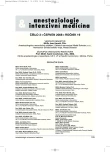A 39-year patient with a severe haemorrhagic-traumatic shock due to a gunshot, with a left-sided penetrating chest wound resulting in haemothorax, pneumothorax and massive blood loss was treated in the Czech Field Hospital ROLE 2 plus after a terrorist attack in Kabul. The initial Sequential Organ Failure Assessment (SOFA) of 13 points improved thanks to damage control surgery and adequate perioperative care to 5 points, increasing the chance of survival from 5% to 80%. The patient was transported to his homeland on the 3rd postoperative day where he recovered.
Authors:
Jurenka Božetěch 1; Ryska Miroslav 2; Kalas Ladislav 3; Oberreiter Martin 4
Authors‘ workplace:
Anesteziologicko-resuscitační oddělení, Ústřední vojenská nemocnice Praha
1; Chirurgická klinika, 2. LF UK a Ústřední vojenská nemocnice, Praha
2; Radiologické oddělení, Vojenská nemocnice Brno
3; 6. Polní nemocnice Armády České republiky, Kábul
4
Published in:
Anest. intenziv. Med., 19, 2008, č. 3, s. 143-148
Category:
Anaesthesiology - Case Report
Overview
A 39-year patient with a severe haemorrhagic-traumatic shock due to a gunshot, with a left-sided penetrating chest wound resulting in haemothorax, pneumothorax and massive blood loss was treated in the Czech Field Hospital ROLE 2 plus after a terrorist attack in Kabul. The initial Sequential Organ Failure Assessment (SOFA) of 13 points improved thanks to damage control surgery and adequate perioperative care to 5 points, increasing the chance of survival from 5% to 80%. The patient was transported to his homeland on the 3rd postoperative day where he recovered.
Authors noted that standard therapeutic approaches can be kept to in the extraordinary conditions of ROLE 2 plus Hospital in Afghanistan. Teamwork and optimal timing of transport to a higher medical facility are an integral part of patient management, and the only way to achieve success in the high risk region.
Keywords:
terrorist attack – haemorrhagic-traumatic shock – lung injury – survival assessment
Sources
1. Ferreira, F. L. et al. Serial evaluation of the SOFA score to predict outcome in critically ill patients. JAMA, 2001, 286, p. 1754–1758.
2. Allman, K. G., Wilson, I. H. Oxford handbook of anaesthesia. Oxford University Press : Oxford 2007.
3. American College of Surgeons, Committee on Trauma. Advanced Trauma Life Support for Doctors. 6th Impression 2003.
4. Holcomb, J. B., Jenkins, D., Rhee, P. et al Damage control resuscitation: directly addressing the early coagulopathy of trauma. J. Trauma, 2007, 62, p. 307–310.
5. Spahn, D. R., Cerny, V., Coarts, T. J. et al. Management of bleeding following major trauma. European guideline. Crit. Care, 2007, 11, p. R17.
6. ARDS clinical network, dostupné na: www.ardsnet.org.
7. Marino, P. L. The ICU book. Third edition. Lippincott Williams & Wilkins, 2007.
8. Van der Berghe, G., Wouters, P., Weekers, F. et al. Intensive insulin therapy in critically ill patients. NEJM, 2001, 345, p. 1359–1367.
9. De-Souza, D. A., Greene, L. J. Intestinal permeability and systemic infections in critically ill patients: effect of glutamine. Crit. Care Med., 2005, 33, p. 1125–1135.
10. Bistrian, B. R., McCowen, K. C. Nutritional and metabolic support in the adult intensive care unit: key contraversies. Crit. Care Med., 2006, 34, p. 1525–1531.
11. Baert, A. L., Gourtsoyiannis, N. Emergency Radiology. Reprints from European Radiology, 2003, 12, p. 101–122.
12. Gattinoni, L., Cairon, M., Cressoni, M. et al. Lung recruitment in patients with acute respiratory distress syndrome. NEJM, 2006, 354, p. 1775–1786.
Labels
Anaesthesiology, Resuscitation and Inten Intensive Care MedicineArticle was published in
Anaesthesiology and Intensive Care Medicine

2008 Issue 3
Most read in this issue
- A 39-year patient with a severe haemorrhagic-traumatic shock due to a gunshot, with a left-sided penetrating chest wound resulting in haemothorax, pneumothorax and massive blood loss was treated in the Czech Field Hospital ROLE 2 plus after a terrorist attack in Kabul. The initial Sequential Organ Failure Assessment (SOFA) of 13 points improved thanks to damage control surgery and adequate perioperative care to 5 points, increasing the chance of survival from 5% to 80%. The patient was transported to his homeland on the 3rd postoperative day where he recovered.
- Selective bronchial intubation with the UniventR tracheal tube in children
- Research in Anaesthesiology and Resuscitation in the second half of 20th Century
- Preventive measures of nosocomial infection in ventilated patients – current status
